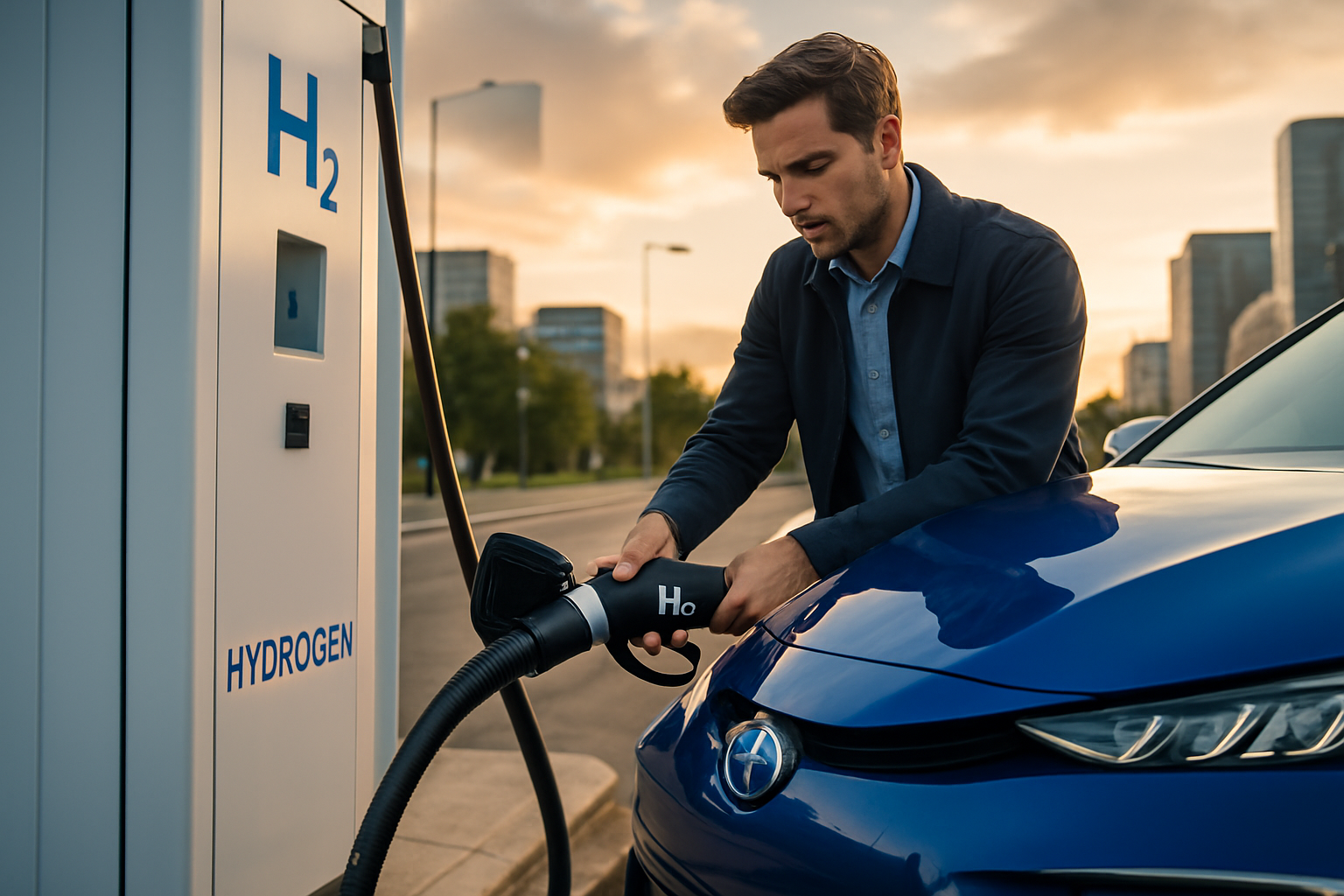Hydrogen Fuel Cell Vehicles: The Next Frontier in Clean Transportation
In a world grappling with climate change and seeking sustainable solutions, hydrogen fuel cell vehicles (FCVs) are emerging as a promising alternative to traditional combustion engines. This groundbreaking technology harnesses the power of hydrogen to produce electricity, emitting only water vapor as a byproduct. As automakers and governments worldwide invest heavily in this innovative approach, FCVs are poised to revolutionize the automotive landscape, offering a clean, efficient, and potentially game-changing solution to our transportation needs.

Infrastructure Challenges and Solutions
One of the primary hurdles facing widespread adoption of hydrogen FCVs is the lack of refueling infrastructure. Unlike traditional gas stations, hydrogen fueling stations are still relatively scarce. However, several countries are making significant strides in addressing this issue. Japan, for instance, has committed to building a network of hydrogen stations across the country, aiming to have 1,000 stations operational by 2030. Similarly, Germany and California are investing heavily in hydrogen infrastructure, recognizing its potential to revolutionize transportation.
Advantages Over Battery Electric Vehicles
While battery electric vehicles (BEVs) have gained significant traction in recent years, hydrogen FCVs offer several distinct advantages. Firstly, refueling a hydrogen vehicle takes only a few minutes, comparable to filling up a conventional gas tank. This is in stark contrast to the longer charging times required for BEVs. Additionally, FCVs typically have a longer range than their battery-powered counterparts, making them more suitable for long-distance travel and heavy-duty applications like trucking and public transportation.
Environmental Impact and Sustainability
The environmental benefits of hydrogen FCVs are substantial, particularly when the hydrogen is produced using renewable energy sources. When powered by green hydrogen – hydrogen produced through electrolysis using renewable electricity – FCVs become a truly zero-emission solution. This potential for complete decarbonization of the transportation sector is driving significant interest and investment in the technology. Moreover, the versatility of hydrogen as an energy carrier opens up possibilities for sector coupling, where excess renewable energy can be stored as hydrogen and later used in vehicles or other applications.
Technological Advancements and Future Prospects
Recent technological breakthroughs are making hydrogen FCVs increasingly viable. Advances in fuel cell design have improved efficiency and durability while reducing costs. For example, researchers are developing new catalyst materials that reduce the need for expensive platinum, a key component in current fuel cells. Additionally, innovations in hydrogen storage are addressing concerns about safety and range. Some automakers are exploring solid-state hydrogen storage technologies that could dramatically increase the amount of hydrogen that can be stored onboard, further extending the range of FCVs.
Economic Implications and Market Trends
The hydrogen economy presents significant economic opportunities beyond just the automotive sector. As investment in hydrogen technology grows, it’s creating new jobs in research, manufacturing, and infrastructure development. Countries like South Korea and China are positioning themselves as leaders in this emerging field, with ambitious plans to dominate the global market for fuel cells and related technologies. This shift is likely to reshape global supply chains and create new economic powerhouses in the clean energy sector.
Challenges in Hydrogen Production and Distribution
While the potential of hydrogen FCVs is immense, there are still hurdles to overcome in the production and distribution of hydrogen fuel. Currently, most hydrogen is produced from natural gas through a process called steam methane reforming, which still results in carbon emissions. The challenge lies in scaling up green hydrogen production to meet potential demand from the transportation sector. Innovative solutions, such as using offshore wind farms for dedicated hydrogen production or developing more efficient electrolysis technologies, are being explored to address this challenge.
The Role of Policy and Government Support
Government policies play a crucial role in the adoption of hydrogen FCVs. Countries like Japan, Germany, and South Korea have implemented comprehensive hydrogen strategies that include subsidies for FCV purchases, investment in infrastructure, and support for research and development. These policies are critical in overcoming the initial barriers to adoption and creating a favorable environment for the technology to flourish. As more governments recognize the potential of hydrogen in achieving their climate goals, we can expect to see increased support for FCVs worldwide.
Integration with Smart City Concepts
Hydrogen FCVs are not just about personal transportation; they have the potential to integrate seamlessly with smart city concepts. Imagine a future where hydrogen-powered buses and taxis form the backbone of public transportation, working in tandem with intelligent traffic management systems to reduce congestion and improve air quality. Hydrogen could also power backup generators for critical infrastructure, ensuring resilience in the face of power outages. This holistic approach to urban planning with hydrogen at its core could transform our cities into cleaner, more efficient, and more livable spaces.
Conclusion: A Hydrogen-Powered Future
As we stand on the brink of a transportation revolution, hydrogen fuel cell vehicles offer a compelling vision of the future. With their potential for zero emissions, rapid refueling, and long-range capabilities, FCVs could play a crucial role in our transition to sustainable mobility. While challenges remain, the rapid pace of technological advancement and growing global commitment to clean energy suggest that hydrogen-powered vehicles may soon become a common sight on our roads. As this technology continues to evolve, it promises not just to change how we drive, but to reshape our entire energy landscape, paving the way for a cleaner, more sustainable future.





